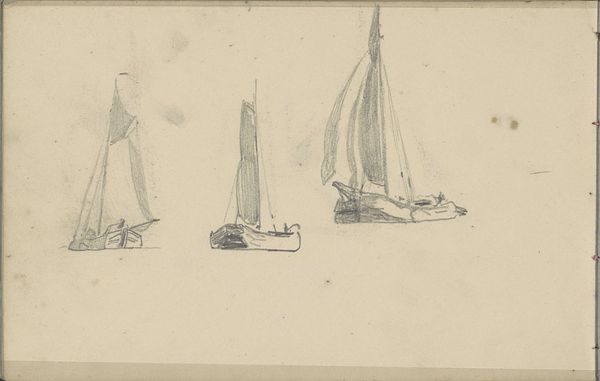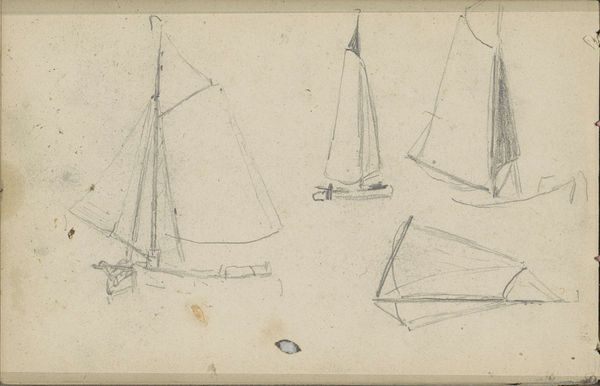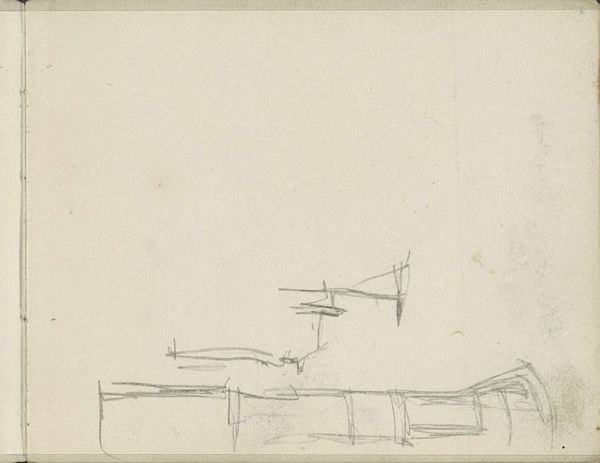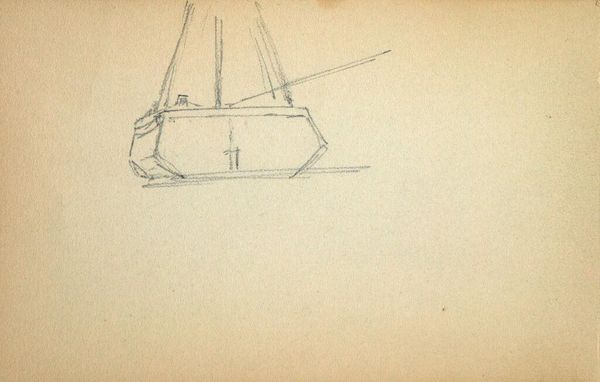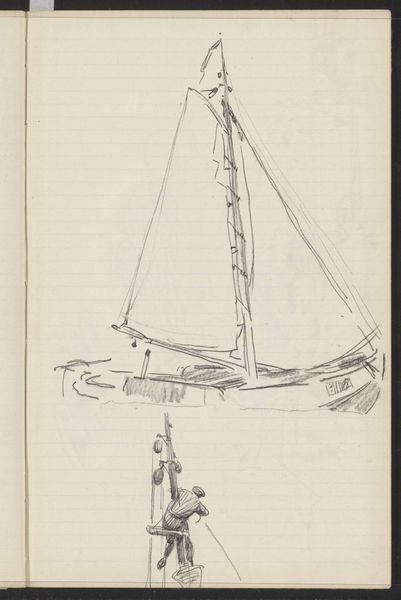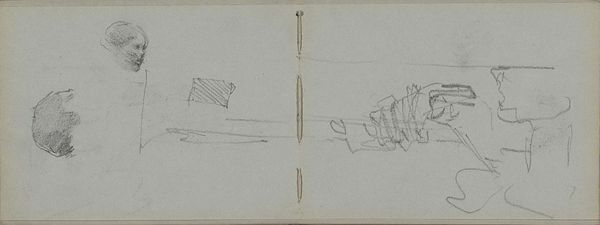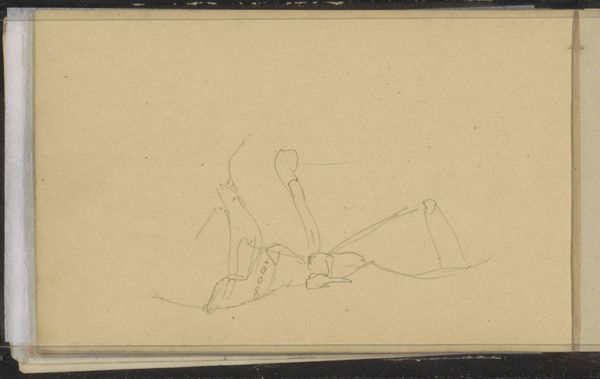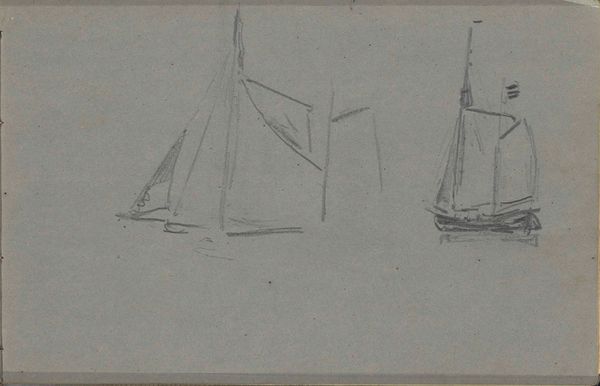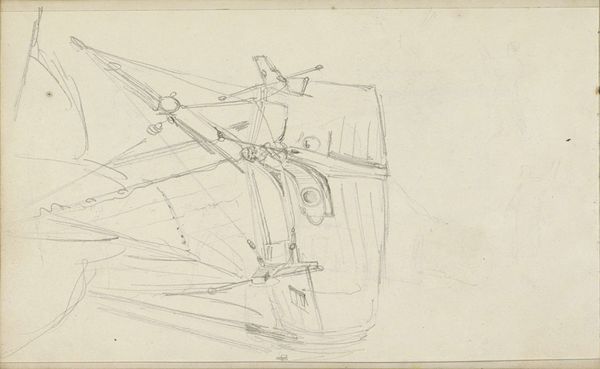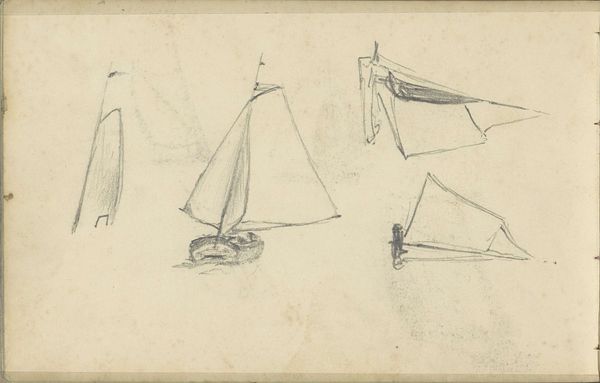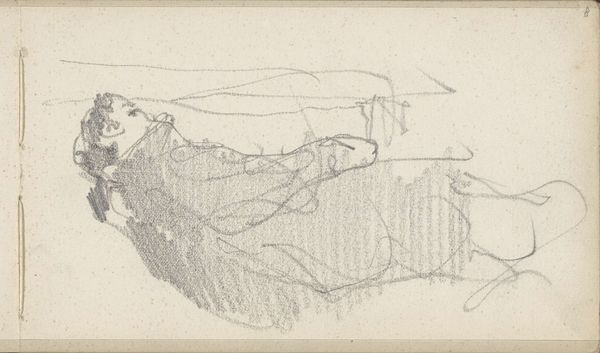
drawing, paper, pencil
#
drawing
#
landscape
#
paper
#
form
#
pencil
#
line
Copyright: Rijks Museum: Open Domain
Editor: So, we're looking at "Schip," a pencil drawing on paper by Louis Apol, dating back to the 1880s, currently at the Rijksmuseum. It strikes me as very simple and sparse. Almost like a fleeting impression. What stands out to you about it? Curator: The simplicity is deceptive. Apol was known for his landscapes, often of winter scenes. I wonder if this sketch might be a preliminary study. We need to consider the art market and collecting practices of the late 19th century. Sketches held value; they showcased the artist's hand, their initial vision. Do you think the 'unfinished' nature was appealing to a specific audience? Editor: I can see that. It feels immediate and authentic. But what would that audience have been looking for, exactly? Was there a growing market for sketches that allowed artists more freedom from academic constraints? Curator: Precisely! There was a shift. A growing middle class with disposable income, looking for art that reflected their own values – often favoring naturalism and scenes of everyday life, but also glimpses into the artistic process. Collectors wanted a piece of the artist’s journey, not just a polished product. Consider, too, the rise of photography. How did this affect the role of drawing? Editor: I guess with photography taking over realistic depiction, drawing could become more about capturing a feeling or an essence rather than a perfect representation? It could be looser, more expressive. Curator: Exactly! And artists could leverage that expressive quality for both aesthetic and commercial gain. It is fascinating to imagine Apol sketching this ship – was it preparation, or was the creation of a drawing in this medium the point in itself? Editor: I hadn't thought of it in that way. Seeing it as part of a bigger cultural shift changes everything. I initially saw it as a simple drawing, but now it’s more like a document of artistic and societal changes. Curator: Indeed. Looking beyond the surface reveals a fascinating intersection of artistic intent, market forces, and evolving perceptions of art itself.
Comments
No comments
Be the first to comment and join the conversation on the ultimate creative platform.
